Exploring the mechanism of moist exposed burn ointment for the treatment of diabetic ulcer based on network pharmacology and molecular docking
YANG Ya-liang, GE Xing-yue, LI Wen-wu, ZHU Shi-lin, YAO Ming-zhe, TANG Qian-li
School of Graduate, Youjiang Medical University for Nationalities, Baise 533000, China
Keywords:
ABSTRACT Objective: To discuss the main active components and potential mechanisms of moist burn ointment in the treat-ment of diabetic ulcer were discussed by network pharmacology and molecular docking technology.Methods: Based on the TC-MSP database, the main active components and targets of MEBO were screened.The targets related to diabetic ulcers were searched from GeneCards, OMIM, PharmGkb, TTD, and DrugBank databases.The STRING 11.5 database was used to con-struct a protein-protein interaction( PPI )network to screen the core targets.The' drug-target-disease' network diagram was made in Cytoscape 3.8.2 software to screen the core active components.GO enrichment analysis and KEGG pathway enrichment analysis were performed using R language software.Finally, molecular docking was used to preliminarily verify the screening results.Results: A total of 37 active components of MEBO were screened to map 100 targets, 5 527 targets for diabetic ulcer dis-ease, and 77 intersection targets.PPI network topology analysis suggested that TP53, TNF, HSP90AA1 and other targets were key targets;the network diagram of' drug-target-disease' showed that acacetin,wogonin, quercetin, and rutaecarpine were the core active ingredients.GO function analysis mainly involved angiogenesis, ion transport, diameter regulation, cytokine receptor binding,and other processes.KEGG enrichment analysis mainly included PI3K-Akt, AGE-RAGE, and other signaling pathways.Molecular docking showed that the core active ingredients and key targets had good docking activity.Conclusion: The treatment of diabetic ulcer with MEBO is the result of multi-component, multi-target, and synergistic regulation, which provides a theoretical basis for the clinical application of MEBO and the treatment of diabetic ulcer.
1.Introduction
With the development of society and the improvement of living standards, diabetes has become one of the world’s top ten causes of death, and diabetic ulcer is one of the most severe chronic complications of diabetes.About a quarter of diabetic patients will have refractory diabetic ulcers[1,2].In 2022, it was reported that the 5-year survival rate of diabetic ulcer patients worldwide was only 50.9%, and the 10-year survival rate was only 23.1%[3].At present,international treatment measures are mainly based on the control of blood glucose through wound dressing, debridement, wound dressing, hyperbaric oxygen, and other methods, but the curative effect is not good.Many patients with diabetic ulcers are eventually forced to amputate[4].It can be seen that diabetic ulcers are still a clinical thorny problem with expensive treatment costs, long cycles,and a high risk of amputation[5].Therefore, there is an urgent need for effective therapeutic drugs to restore the normal healing process of ulcers.
In recent years, many studies have found that the application of MEBO in the treatment of refractory wounds such as diabetic ulcers and burns can significantly shorten the time of wound healing, improve the morphological changes of wounds,reduce the formation of scars, and improve the quality of life of patients[6-8], but its mechanism of action is still unclear.Network pharmacology is an emerging discipline.Through the interaction of ‘disease-gene-protein-drug’, the effect of drugs on diseases can be systematically and comprehensively observed, so as to reveal the complex relationship between traditional Chinese medicine and diseases[9].This research method has the characteristics of integrity and systematicness, which is consistent with the overall theory of traditional Chinese medicine.It is one of the main methods to study the pharmacological mechanism of traditional Chinese medicine compounds[10].Molecular docking is a drug research method based on the interaction between receptors and drug molecules.It can predict the binding mode and affinity of molecular interactions and has become an important technology in the field of computer-aided drug research[11]
2.Data and methods
2.1Database and Software
The specific information of the database and software applied is shown in Table1.
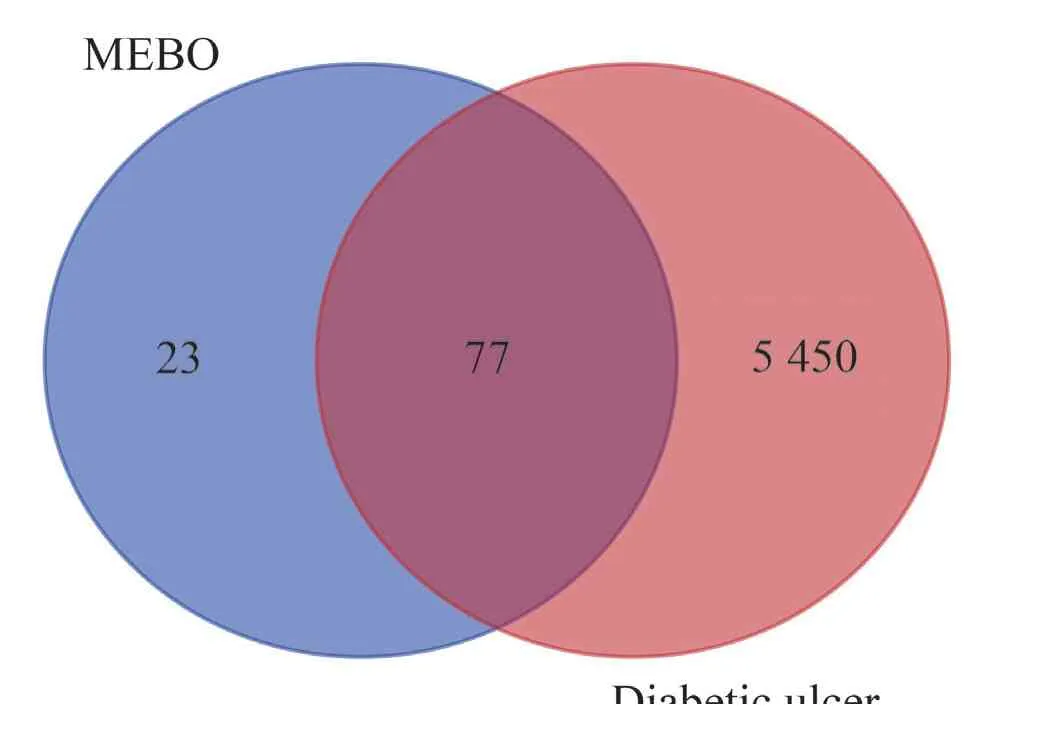
Tab 1 Database and Software
2.2Acquisition and screening of active components and targets of moist exposed burn ointment
Moist Exposed Burn Ointment is composed of five kinds of medicinal materials, such as Rhizoma Coptidis, Pericarpium Papaveris, Radix Scutellariae, Cortex Phellodendri, and Earthworm.The active components and target information of Rhizoma Coptidis,Pericarpium Papaveris, Radix Scutellariae, and Cortex Phellodendri were retrieved in the TCMSP database, and screened based on ADME[12].Since Moist Exposed Burn Ointment is an external drug,with reference to similar research literature[13,14], oral bioavailability is not listed as a screening condition, and screening is based on drug-like properties (DL) 0.18; there are no records of earthworm components and targets in the database.The information on active components and targets of earthworms was summarized by consulting the literature[15-19] related to the study of earthworms.Finally, the UniProt database was used to standardize the query target name into genesymbol.
2.3 Diabetic ulcer target acquisition
Using the five major disease databases of DrugBank, GeneCards,OMIM, TTD, and PharmGkb, ‘diabetic ulcer’ has been used as a keyword to search for disease targets.After merging and deduplication, the related targets of diabetic ulcer disease are obtained.
2.4 Screening of targets for moist exposed burn ointment in the treatment of diabetic ulcer
The targets of drug active ingredients screened in 1.2.1 and the disease targets screened in 1.2.2 were input into the bioinformatics and evolutionary genomics analysis platform for matching mapping,and the Wayne diagram was drawn, and the intersection was taken to obtain the potential targets of MEBO in the treatment of diabetic ulcer.
2.5 Construct a PPI network of moist exposed burn ointment for the treatment of diabetic ulcer targets
The targets related to the treatment of diabetic ulcers with MEBO were input into the STRING 11.5 database to construct proteinprotein interaction.The protein type was set as human, the minimum interaction threshold was medium, and other parameters were kept as default settings.The results were saved in TSV format, and the R language software was used to draw the histogram of the target interaction frequency.
2.6 Construct a’ drug-active ingredient-target-disease’network
Cytoscape 3.8.2 software was used to construct the relationship network of ‘moist burn ointment-target-diabetic ulcer’.The city-NCA plug-in was used to analyze the topological structure of the network, and the core components and targets were screened according to the topological parameters.
2.7 GO function analysis and KEGG pathway enrichment analysis were performed
R language software was used to perform GO and KEGG enrichment analysis on the obtained targets of MEBO in the treatment of diabetic ulcers, and the results were output in histograms and bubble plots.
2.8 Molecular docking of key compounds and core proteins
The 3D structure of the top 4 active components in the PPI network was downloaded from the PubChem database.The PDBID of the target protein was found in the RCSB PDB database and stored in the pdb format.The pdb file was removed by PyMOL software.Water and original ligand processing, Autodock Tolls software for target protein molecules to remove water, hydrogenation, separation of ligands and receptors, etc.Finally, Autodock vina was used for docking.The docking activity was evaluated by binding energy, and the docking results were visualized by PyMOL.
3.Result
3.1 Acquisition and screening of active components and targets of moist exposed burn ointment
Through the TCMSP database and the set conditions, 195 active ingredients of MEBO were obtained, including 70 active ingredients of Phellodendron chinense, 31 active ingredients of Coptis chinensis,72 active ingredients of Scutellaria baicalensis, 18 active ingredients of Poppy shell and 4 active ingredients of Pheretima.Then the active ingredients were input into the UniProt database to standardize the name, delete the duplicates, and the active ingredients whose names could not be found in the UniProt database.Finally, 37 potential active ingredients were obtained, and 12 potential active ingredients were selected for display in Table 2.Then the ‘Related Targets’module was extracted to obtain 100 targets corresponding to the active ingredients of MEBO.
3.2 Diabetic ulcer target acquisition
The keywords ‘diabetic ulcer’ were retrieved from five databases:DrugBank, GeneCards, OMIM, TTD, and PharmGkb, and 12,5383,163,20,8 disease targets were obtained respectively, with a total of 5,586 disease targets, and 5,527 disease targets remained after deduplication.
3.3 Screening of targets for moist exposed burn ointment in the treatment of diabetic ulcer
The 100 targets of MEBO and 5527 targets of diabetic ulcers were input into the bioinformatics and evolutionary genomics analysis platform for matching mapping, and the Wayne diagram was drawn,as shown in Figure 1.The intersection of the two obtained 77 potential targets of MEBO in the treatment of diabetic ulcers.

Tab 2 Information of potential active ingredients of moist exposed burn ointment

Fig 1 Database and Software
3.4 Construct a PPI network of moist exposed burn ointment for the treatment of diabetic ulcer targets
The STRING 11.5 database was used to construct the PPI network of therapeutic targets.A total of 77 nodes and 424 edges were formed, as shown in Figure 2.R language software was used to draw the histogram of target interaction frequency, as shown in Figure 3.The STRING data was imported into Cytoscape 3.8.2 software for visual analysis of the network, and the core enrichment targets were obtained by topological attribute analysis with cytoNCA plugin: mainly involving TNF, TP53, MYC, HSP90AA1, indicating that these targets may be the key targets of MEBO in the treatment of diabetic ulcers, as shown in Figure 4 ( node color depth, node size is proportional to the size of the degree value ).
3.5 Construction and analysis of the ‘drug-active ingredienttarget-disease’ network
Enter the name of the active ingredient of MEBO and the name of the potential target of MEBO for the treatment of diabetic ulcer in Cytoscape 3.8.2 software, and draw the ‘drug-active ingredienttarget-disease’ interaction network diagram, as shown in Figure 5;the results showed that acacetin (MOL001689), wogonin(MOL000173), quercetin (MOL000098) and rutaecarpine(MOL002662) in MEBO may play a major role in the treatment of diabetic ulcers.

Fig 2 PPI network of potential targets of MEBO in treatment of DU
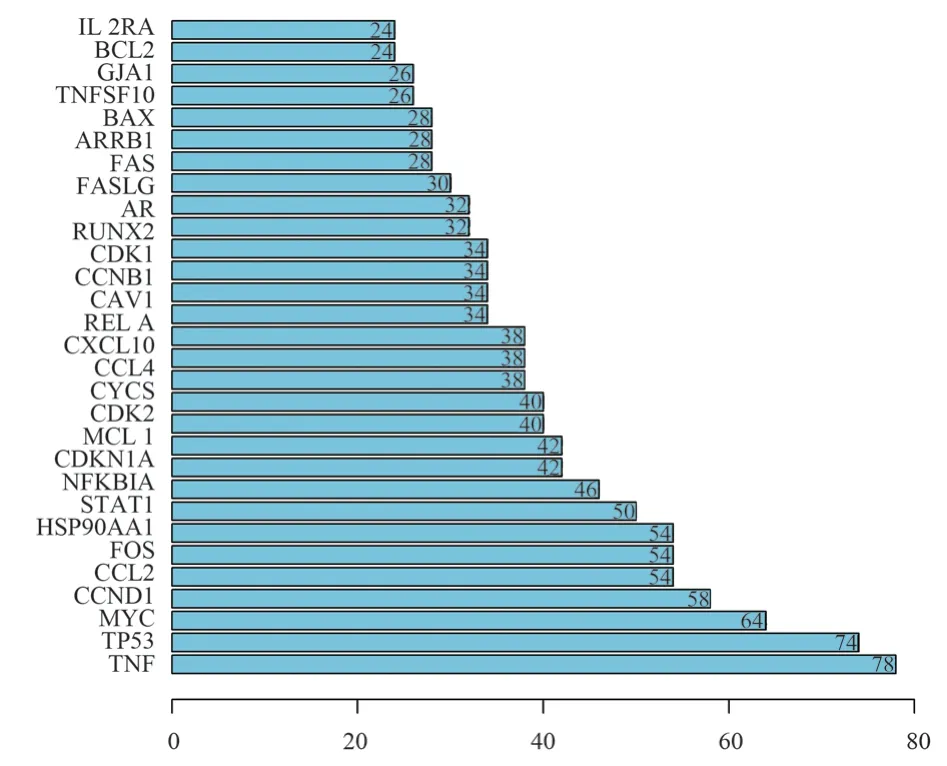
Fig 3 MEBO in the treatment of DU target interaction frequency diagram
3.6 GO function analysis and KEGG pathway enrichment analysis were performed
GO and KEGG enrichment analysis of therapeutic targets was performed using R language software.Among them, there are 339 biological processes, 54 molecular functions, and 73 cell components.BP mainly includes biological processes such as ion transport, diameter regulation, and angiogenesis in the circulatory system.MF mainly includes G protein-coupled receptor binding, cytokine receptor binding, ubiquitin-like protein ligase binding, and other functions; CC mainly includes cyclins, protein kinase complexes, and intrinsic components of the postsynaptic membrane.The top 24 were selected for the histogram (Figure 6);KEGG analysis showed that it was mainly enriched in hepatitis C, atherosclerosis, PI3K-Akt, AGEs-RAGE, and other signaling pathways.The top 30 were selected for the bubble diagram (Fig.7).In summary, MEBO may promote the healing of diabetic ulcers by regulating multiple biological processes and multiple signaling pathways.
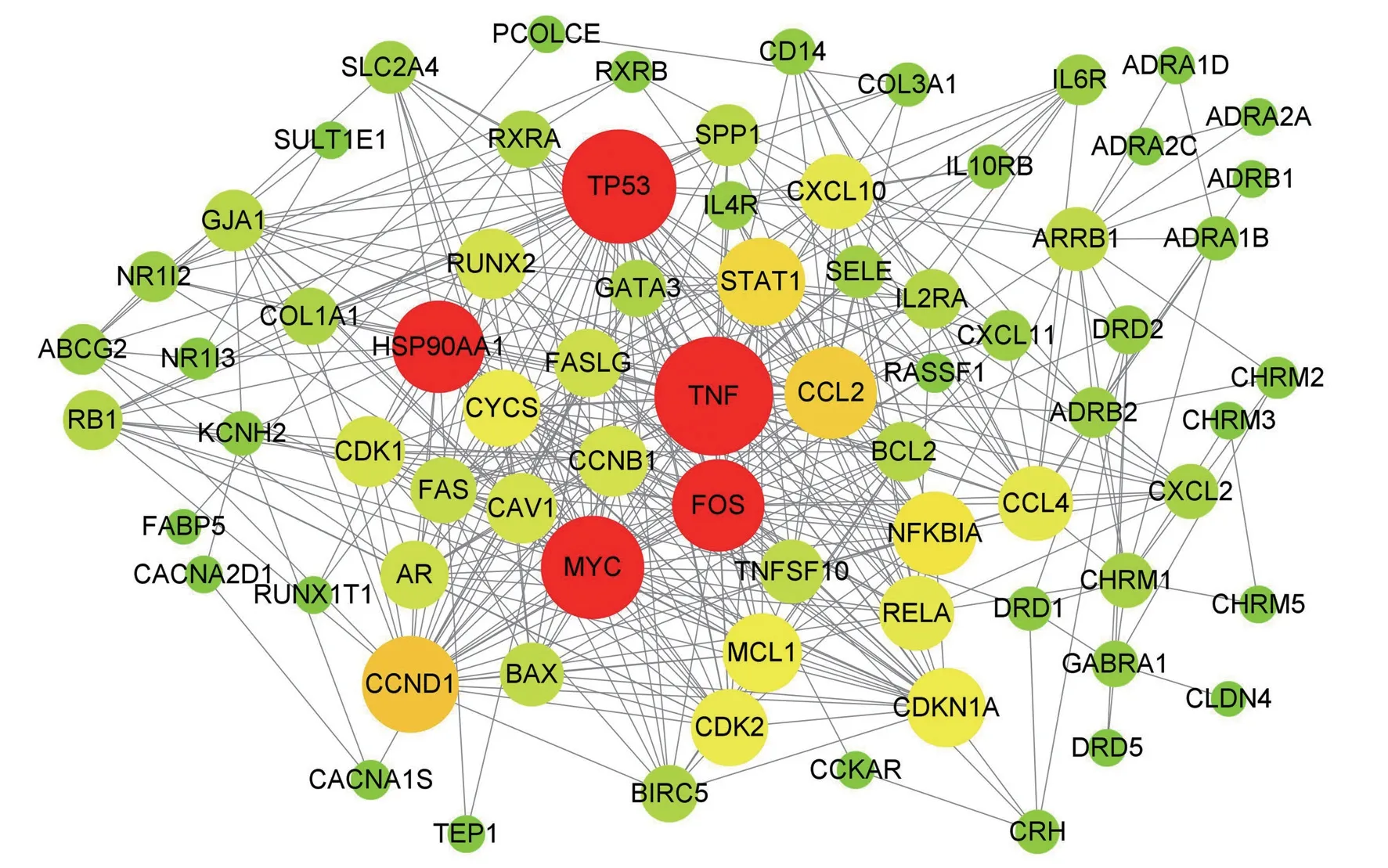
Fig 4 MEBO in the treatment of DU target interaction frequency diagram
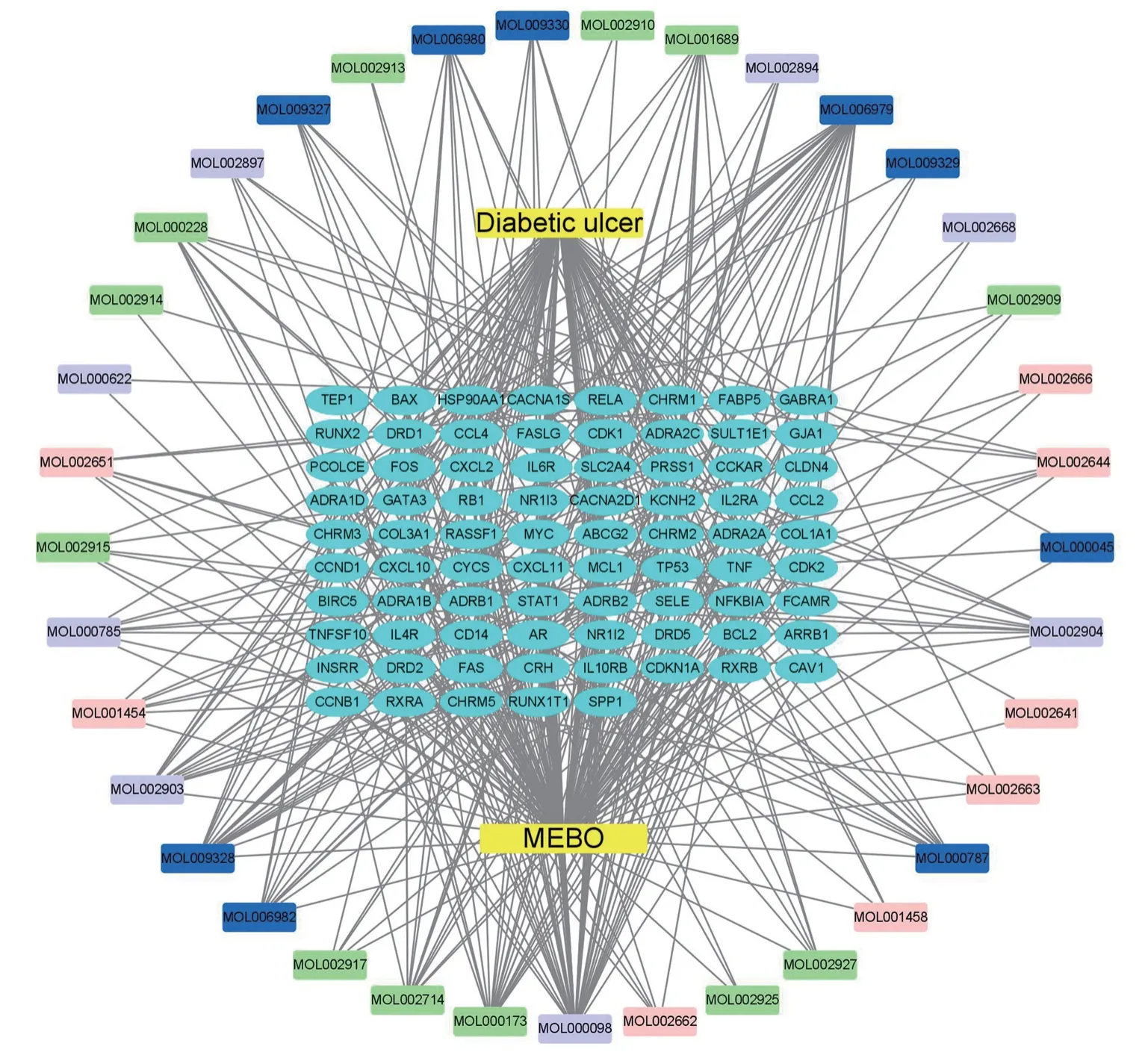
Fig 5 Network of herbals-active ingredients-targets
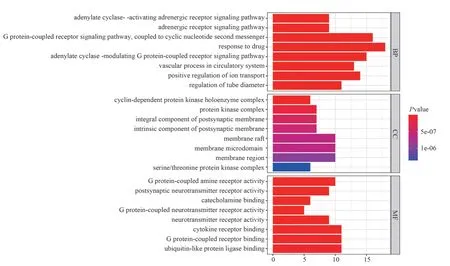
Fig 6 GO enrichment histogram of intersection target of MEBO in treatment of DU

Fig 7 KEGG enrichment bubble diagram of intersection target of MEBO in treatment of DU
3.7 Molecular docking results
Search the core target through the RCSB PDB database and download its 3D structure; the 3D structure of the active ingredients of MEBO was downloaded from PubChem database, and the specific information is shown in Table 3.Using AutoDock Vina and PyMOL software for molecular docking, it is generally believed that the minimum binding energy is less than -5.0 kJ/mol, indicating that the binding activity is good[20].In this study, it was found that the minimum binding energy of the four active components to the three target proteins was lower than -5.0 kJ/mol, and the specific scores were shown in Fig.8.The molecular docking diagram (Fig.9) shows that each target and each active ingredient are combined by hydrogen bond energy intermolecular forces, further indicating that the active ingredient has a good binding ability to the target, and the binding energy of rutaecarpine and TNF is the lowest.It may be the most effective active ingredient for the treatment of diabetic ulcers with moist burn ointment.
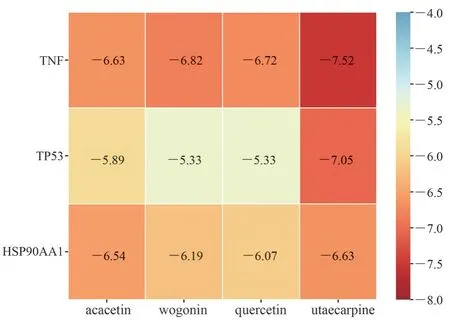
Fig 8 Heat map of molecular docking minimum binding energy
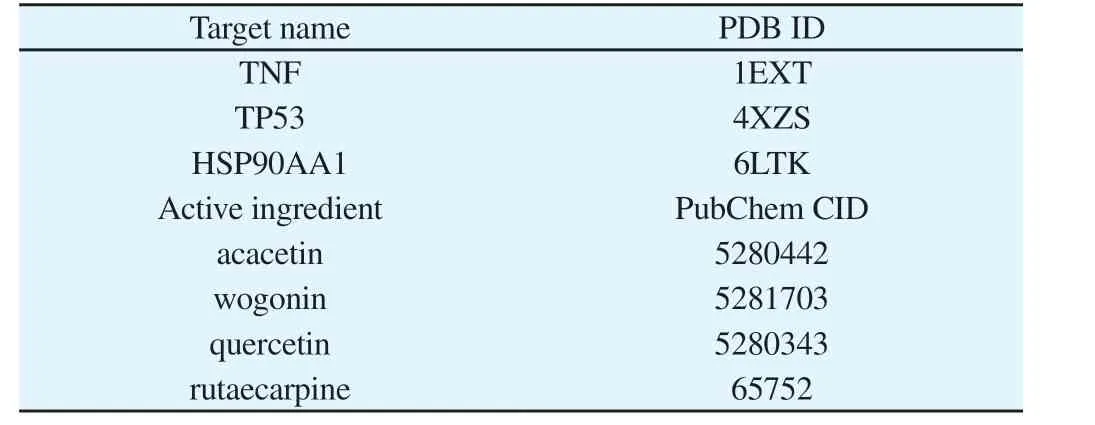
Tab 3 Information of Target protein and active ingredient
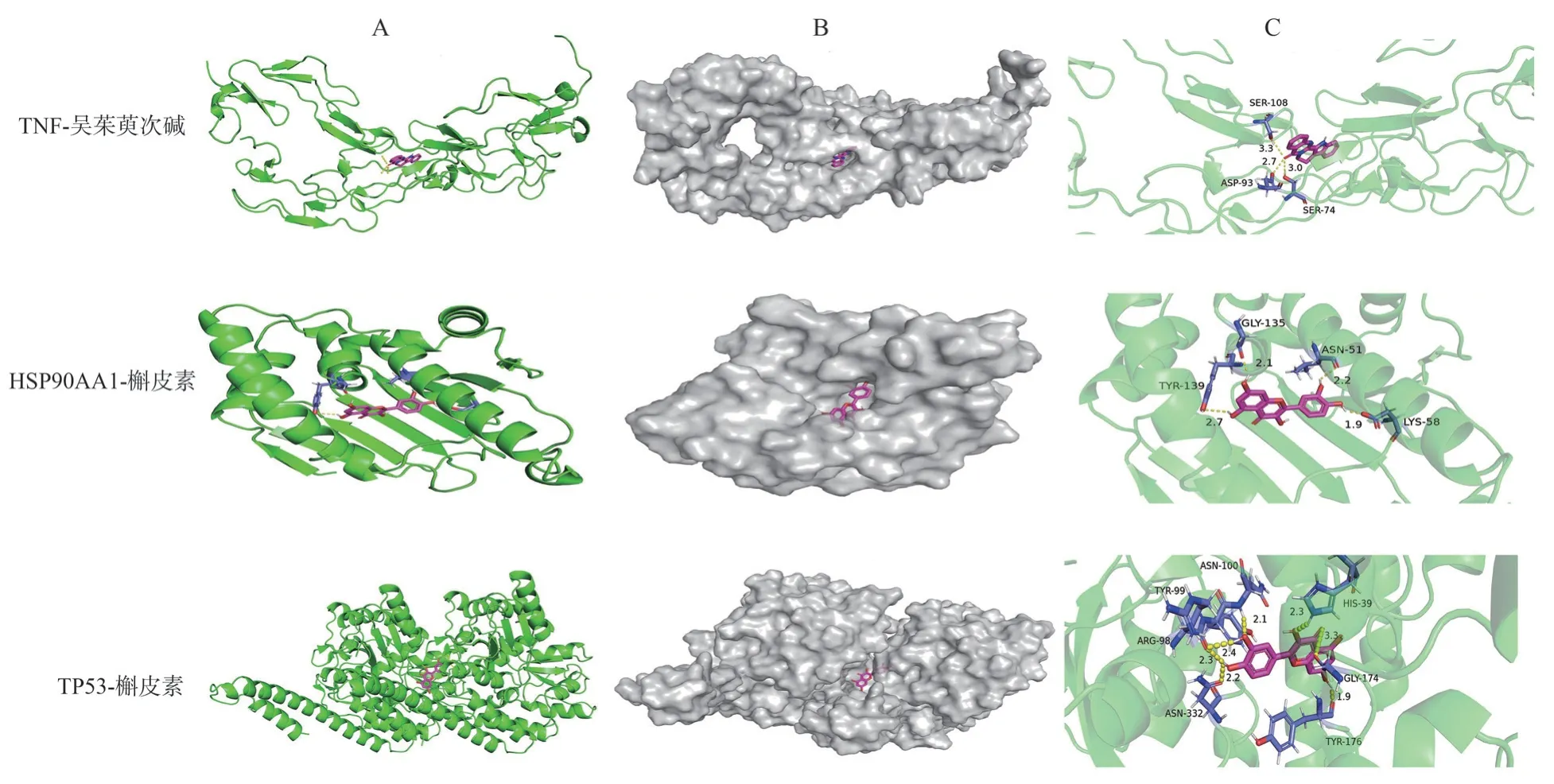
Fig 9 Molecular docking diagram of some active compounds with core target proteins
4.Discussion
Diabetic ulcer belongs to the category of ‘diabetes’ and ‘gangrene’in traditional Chinese medicine.‘Lingshu carbuncle gangrene’ says:It occurs in the toe, the name of the carbuncle, its shape is red and black, death does not cure; not black, not dead.Unfailing, desperate,not dead[21].This disease has a long history, and it is still difficult to find an effective treatment.In recent years, traditional Chinese medicine has shown its unique advantages in the treatment of diabetic ulcers.The typical representative drug moist burn ointment can significantly change the pathological inflammatory response of diabetic ulcers, promote angiogenesis, accelerate the formation of granulation tissue and epithelial cells, and significantly shorten the healing time[22-26], but its mechanism of action is still unclear.In this study, the mechanism of MEBO in treating diabetic ulcers was analyzed by network pharmacology.By constructing a ‘drugactive ingredient-target’ network model, it was found that the core active ingredients of MEBO in treating diabetic ulcers may be acacetin, wogonin, quercetin, and rutaecarpine.Studies have shown that[27], acacetin has anti-inflammatory effects, can reduce the release of TNF-α and IL-1β in tissues, inhibit the production of reactive oxygen species, reduce tissue edema, and accelerate tissue repair.Wogonin can exert anti-inflammatory effects through IL-6/STAT3 and PI3K/Akt pathways[28].It can also reduce the level of intracellular reactive oxygen species and reduce the activity of intracellular nuclear transcription factor κB, thereby weakening macrophage-mediated inflammatory response[29].Quercetin can increase the expression of interleukin 10, vascular endothelial growth factor (VEGF), and transforming growth factor-β1 (TGFβ1), and inhibit the inflammatory response by regulating the polarization of macrophage M1/M2 phenotype, thereby accelerating the healing of diabetic ulcers[30,31].Rutaecarpine has a protective effect on vascular endothelial cell injury.In the endothelial cell injury model, rutaecarpine reduces endothelial cell apoptosis and inhibits the adhesion of endothelial cells to monocytes, thereby improving gap junction intercellular communication, protecting vascular endothelium, and promoting tissue repair.[32] Rutaecarpine has the effect of protecting.The topological property analysis and R language KEGG enrichment analysis of cytoNCA plug-in in Cytoscape 3.8.2 software showed that the intersection genes were mainly involved in TNF, TP53, HSP90AA1, PI3K-Akt, AGE-RAGE,and other signaling pathways, suggesting that the treatment of diabetic ulcers with MEBO may play a role by regulating these key genes and signaling pathways.TNF is a pro-inflammatory factor that stimulates monocytes and endothelial cells to secrete inflammatory factors such as IL-1β and IL-6.In addition, TNF can inhibit the activity of nitric oxide synthase (NOS) in vascular endothelial cells, resulting in reduced NO-induced vasodilation, leading to endothelial dysfunction and affecting the healing process.[33] Studies have confirmed that MEBO can improve wound inflammation and promote healing by reducing the expression of IL-6, TNF-α,and other factors[34,35].The PI3K-Akt signaling pathway can be involved in the regulation of cell proliferation, differentiation,apoptosis, glucose transport, and other cell functions.Studies have confirmed that[36,37] MEBO can regulate the level of autophagy by activating the PI3K-Akt signaling pathway, inhibit the proliferation of rat skin fibroblasts induced by lipopolysaccharide, and thus accelerate the healing of ulcer wounds in rats.The above results are consistent with the prediction of this network pharmacology,indicating that TNF and PI3K-Akt signaling pathways are the main targets of MEBO in the treatment of diabetic ulcers.It is known that TP53 can inhibit glycolysis and participate in oxidative stress.TP53 gene polymorphism marker Pro72Arg is associated with the pathogenesis of various diabetic complications[38].The serum TP53 level of T2DM patients is significantly increased[39].Combined with the results of this analysis, it is speculated that TP53 may play an important role in metabolic diseases such as diabetes.The AGERAGE signaling pathway is an important pathway in the healing process of diabetic ulcers.Under hyperglycemia, a large amount of advanced glycation end products (AGEs) are accumulated in tissue matrix and cells.AGE binds to its ligand RAGE to produce a variety of cytokines, leading to continuous oxidative stress and inflammatory response in tissues and delaying ulcer healing[40,41].Another study found that in the presence of AGE-modified bovine serum albumin,epidermal keratinocytes lose their proliferation and migration ability[42], and it was found in the wound that the expression level of AGE and its ligand RAGE increased and the combination of AGERAGE inhibited the proliferation of epidermal keratinocytes[43],indicating that the AGE-RAGE signaling pathway is closely related to the healing of diabetic ulcers.In addition, molecular docking results also showed that active ingredients such as quercetin and rutaecarpine have good binding activity with key targets TNF, TP53,and HSP90AA1.It is suggested that MEBO may play a therapeutic role in diabetic ulcers by regulating apoptosis and proliferation,mediating inflammatory response and immune regulation.
In summary, MEBO promotes the healing of diabetic ulcers through a complex process of multi-component, multi-target, and multipathway.Through network pharmacology and molecular docking,it is preliminarily clarified that the treatment process may involve core targets such as TNF, TP53, and HSP90AA1, and regulate PI3KAkt, AGE-RAGE, and other signaling pathways to play a role in promoting healing, which provides ideas for further research on the treatment of diabetic ulcers with MEBO, but its mechanism and efficacy need to be further verified in vivo and in vitro experiments and clinical applications.
Author’s contribution
Yang Yaliang is responsible for the conception of the article and the writing of the paper; Zhu Shilin is responsible for data collection;Yao Mingzhe is responsible for data collation; Ge Xingyue and Li Wenwu are responsible for the feasibility analysis and revision of the paper; Tang Qianli is responsible for the quality control and review of the article, and is responsible for the whole article.All authors declare that there is no conflict of interest.
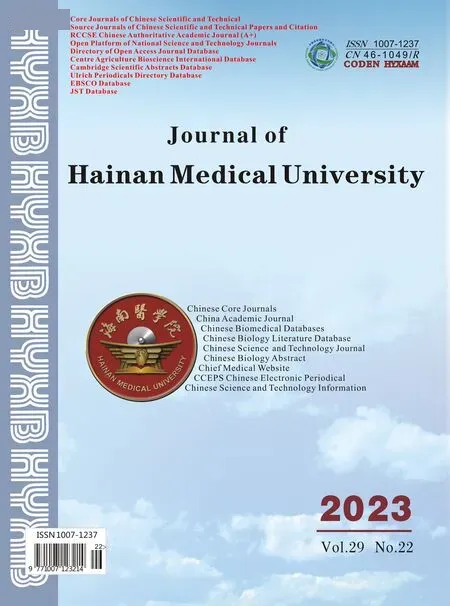 Journal of Hainan Medical College2023年22期
Journal of Hainan Medical College2023年22期
- Journal of Hainan Medical College的其它文章
- Research progress in genomics associated with prognosis of upper tract urothelial carcinoma
- A review of clinical research on using FIT screening for colorectal cancer
- Clinical efficacy of external treatment with Zi Cao Yang He Tang combined with hormone therapy for granulomatous mastitis and its effect on cellular pyroptosis proteins
- Sociopsychological impact factors of depression patients during the COVID - 19 epidemic period
- Clinical efficacy of leprerelin acetate with different dosage forms in central precocious puberty girls
- Pharmacodynamic study of cannabidiol on bleomycin-induced pulmonary fibrosis in rats
